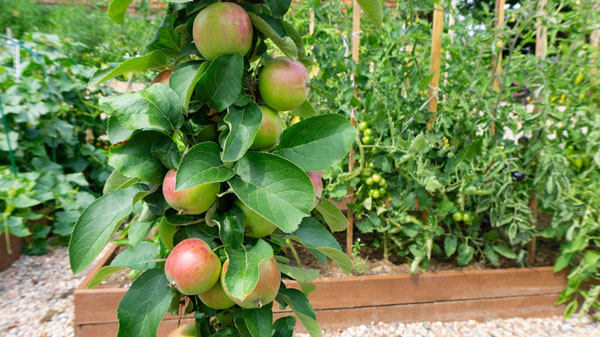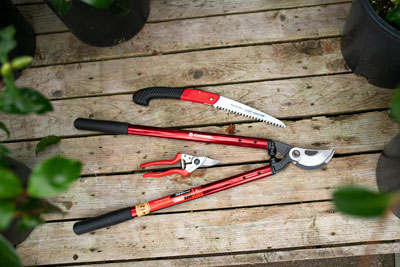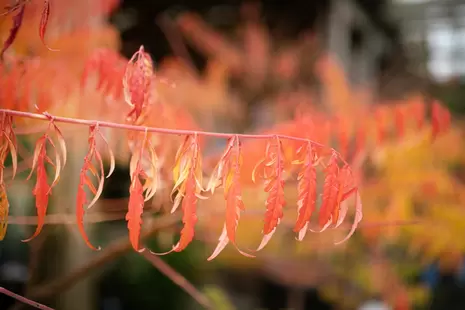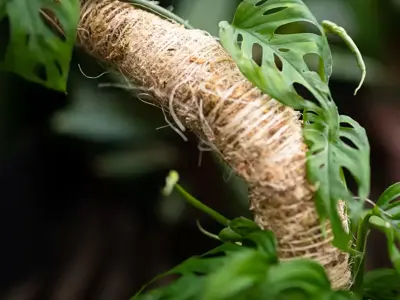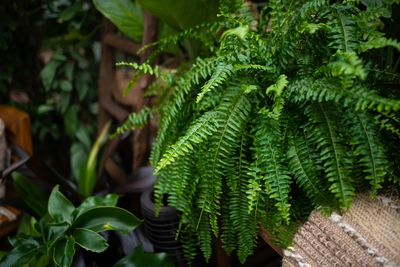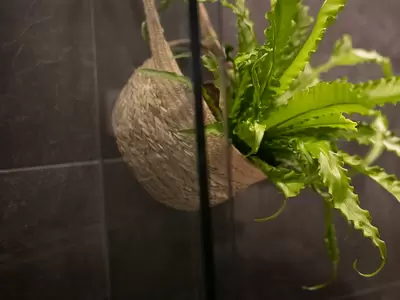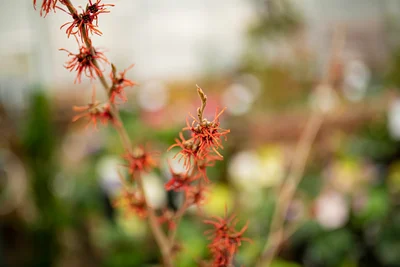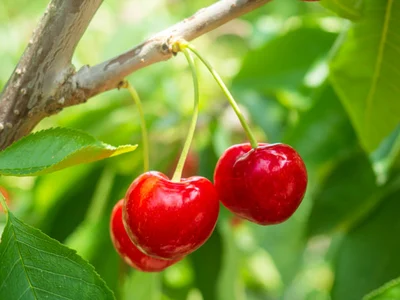
Written by: Ingrid Hoff
Not everyone believes me when I tell them I have an orchard in the backyard of my urban townhouse. Okay, perhaps the term “orchard” might be a slight exaggeration but in my tiny backyard I have three apple trees, all growing in containers. You can grow almost any fruit tree in almost any space if you just know a few key tips and choose carefully.
Containerizing
The first thing you need to know if you want to grow a fruit tree in a container is size matters. Trees need roots and soil and water, and if your container is too small then you won’t have enough of any of those things. You need something in a 15 gallon (20” diameter and 14” height) or bigger, otherwise your tree is going to struggle for the basic necessities or you will constantly be pruning it to control its growth.
Rootstocks
A popular choice for patio fruit growing is grafted trees, which is when one desirable plant grows on the roots of a slightly different plant. This results in vigorous roots with usually a shorter tree, producing lots of fruit in a smaller, easier to harvest space. This makes them perfect for growing in a container, or planting in a garden bed without taking over and shading the whole yard. It also means that you have room to grow more than one tree. So, when choosing your tree make sure to read the label and look for words like dwarf or semi-dwarf. Or talk to one of the knowledgeable GARDENWORKS nursery staff.
Growing Success
Follow proper instructions on how to plant your tree (check out a tip sheet or talk to a nursery staff member). You only get one chance to start your tree off right. If you are growing in a container, make sure to use a good quality potting mix, if you are planting in the ground make sure the soil is rich and well drained. Your tree should be in spot where it will get enough sunlight, fresh air, and make sure to give it a yearly boost with some fertilizer. If growing in a container take extra care to amend the potting mix yearly since you don’t have the buffer of a large reservoir of soil and nutrients as you would in a garden bed.
Pruning
Pruning could be a topic all on its own, but the general thing to know is when your tree is young let it grow, and once it’s had time to establish start to prune to control the growth and increase yield. This is a bit different in a container where you have to pay attention to balancing your roots and shoots. In a container the roots are limited so you have to make sure that the above ground growth can be supported by the roots. There is lots of information available on how and when to prune fruits trees so when the time comes check out a blog, tip sheet or ask a GARDENWORKS nursery staff for advice.
Pollination
There are two types of fruit trees, self-fertile and self-sterile. Self-fertile trees are just as it sounds, they can fertilize themselves. You can plant a single tree and expect to get fruit.
However, self-sterile are also just as they sound, not able to produce fruit on their own. They need a second similar tree that will bloom at the same time nearby so that the pollinators (bees) will carry the pollen between them. The pollen from a self-sterile tree cannot fertilize itself. So, you will either need to have two trees (they should of course be different cultivars with the same bloom time) or at least have one growing in your neighbourhood near enough for a bee to find them both.
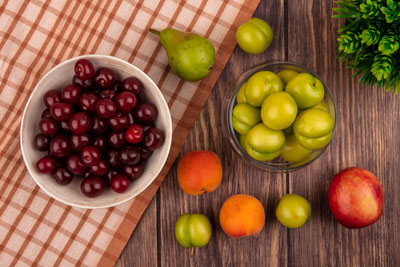
Best fruit trees that grow well in containers and the garden:
- Apples are mostly self-sterile but there are a few self-fertile so make sure you know what you are getting and be prepared to get two trees. Dwarf or semi-dwarfing rootstocks are common.
- Nectarine, peach, and apricots are mostly self-fertile but will always do better with more than one nearby. They grow fast so in a container may need replanting every 2-3 years. These trees need summer heat so plant accordingly.
- Pears are mostly self-sterile, so if you want pears you must commit to more than one or make sure your neighbours are growing them too.
- Plums are mostly self-fertile, but to get good crops you must thin the fruit in spring or they will be small and sour. Also, dwarf plums are not as commonly found as with other fruit trees. So, keep in mind that you will need a big pot if containerizing and make sure you stay on top of pruning.
- Cherries, many modern varieties are self-fertile, but be sure to read your labels because many of the older varieties are not. Give them lots of sun and summer warmth but make sure they don’t dry out since they have a shallow root system, something to watch for in a container. Also look for dwarfing root stalks. Be aware though, birds like cherries too!
- Figs can be pruned into a tree or a bush, but either way they are a wide and tall plant so give them some room or be prepared to prune. Also consider root pruning container grown figs if you see a reduction in vigour. Root pruning is done by sliding the root ball out of the container and pruning back the roots by 1/3, then repotting with new fresh potting mix. This invigorates the plant and produces new lush growth.
For further reading, check out our Trees and Shrubs on the Patio blog.

